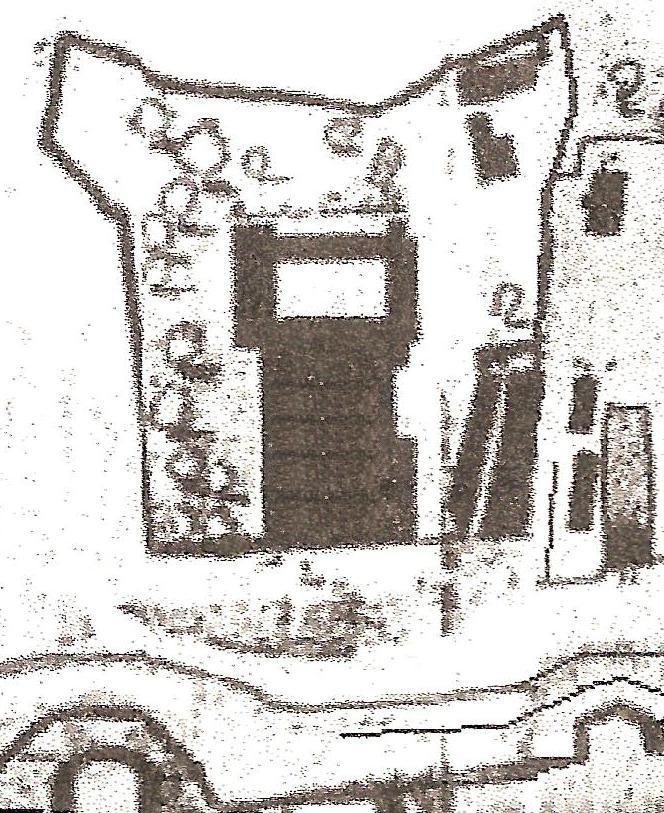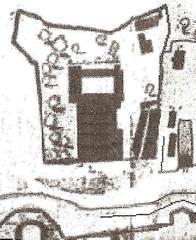
Carmelite Church in Lviv: Visiting Hours, Tickets, and Historical Significance
Date: 03/07/2025
Introduction
Set in the heart of Lviv, Ukraine, the Carmelite Church—also known as the Church of St. Archangel Michael—stands as a striking testament to the city’s rich spiritual, artistic, and architectural legacy. This Baroque masterpiece, constructed by the Discalced Carmelite monks in the early 17th century, encapsulates centuries of devotion, artistic achievement, and historical resilience. With its imposing twin towers, 17th-century black marble altar, and vivid frescoes painted by Italian masters, the church is an essential stop for visitors seeking to experience Lviv’s most significant religious and architectural landmarks. This guide provides comprehensive information on the Carmelite Church’s history, practical visiting details (including hours and ticketing), accessibility, guided tours, and nearby attractions, ensuring a rewarding and seamless visit (Wikipedia; Lviv Travel; The Crazy Tourist).
Table of Contents
- Early Foundations and Construction (17th Century)
- Turbulent Times: Attacks and Fortification
- Baroque Transformation and Artistic Flourishing (18th Century)
- Josephine Suppression and Changing Ownership (Late 18th–19th Century)
- 20th Century: War, Soviet Era, and Decline
- Revival and Modern Era (1991–Present)
- Visiting the Carmelite Church: Practical Information
- Visuals and Media Suggestions
- Frequently Asked Questions (FAQ)
- Conclusion
- References
Early Foundations and Construction (17th Century)
The Carmelite Church’s origins date to the early 17th century, soon after the arrival of the Discalced Carmelite monks in Lviv. Initially settled in the Krakiv suburb, the monks began constructing their fortified monastic complex in 1634 near the city’s eastern walls (Wikipedia; discover-ukraine.info). Designed by Jan (Ivan) Pokorowicz, the original church reflected the austere values of the Carmelite order. The strategic location and robust defensive walls signaled its dual function as both a house of worship and a protective fortress (travels.in.ua).
Turbulent Times: Attacks and Fortification
The church and monastery experienced repeated attacks due to their location outside Lviv’s main gates. During the Khmelnytsky Uprising (1648–1657), Cossack forces severely damaged the complex (Wikipedia). In 1704, Swedish King Charles XII captured the monastery, exploiting its weakly guarded gate. Additionally, the site witnessed intense rivalry between religious orders, most notably in the 1748 “monomachia” between Carmelite and Capuchin monks (discover-ukraine.info).
Baroque Transformation and Artistic Flourishing (18th Century)
Between 1717 and 1732, the Carmelite Church underwent a dramatic Baroque transformation. Italian artist Giuseppe Carlo Pedretti, assisted by Bernardine monk Benedict Mazurkevich, created the celebrated frescoes covering the walls and ceilings, depicting biblical scenes and Carmelite history (lviv.travel; travels.in.ua). The black marble main altar, attributed to Oleksandr Prokhenkovych, remains a highlight of the church’s artistic legacy. Periodic restorations in 1870, 1906, and 1918 preserved the church’s ornate interior.
Josephine Suppression and Changing Ownership (Late 18th–19th Century)
Austrian Emperor Joseph II’s reforms led to the expulsion of the Barefoot Carmelites in 1784, transferring the monastery to the Reformers and later to the Discalced Carmelites (lviv.travel). The church’s exterior evolved, gaining its distinctive twin towers in the 19th and early 20th centuries, designed by Alois Vondrashka and completed by Vladyslav Halytskyi (travels.in.ua; discover-ukraine.info).
20th Century: War, Soviet Era, and Decline
Following World War II, the Soviet regime closed the monastery, repurposing the church as a warehouse and assigning other parts of the complex to secular uses, including KGB operations (lviv.travel). The site deteriorated, despite being transferred to the Lviv Historical and Architectural Reserve in 1979.
Revival and Modern Era (1991–Present)
With Ukraine’s independence, the church was returned to the Ukrainian Greek Catholic Church (UGCC) and the Studite Order. Restoration efforts included cleaning, roof and window repairs, and interior refurbishments, culminating in the first post-Soviet Divine Liturgy in March 1991 (travels.in.ua). Today, the church is both an active place of worship and a vital heritage landmark.
Visiting the Carmelite Church: Practical Information
Visiting Hours
The Carmelite Church is generally open daily from 9:00 AM to 6:00 PM. Hours may vary on religious holidays or during special events, so visitors are encouraged to check the official Lviv tourism website or contact the parish office for up-to-date information.
Tickets and Admission
Entry is free, but donations are welcome to support restoration and upkeep. Fees may apply for guided tours arranged with local operators.
Accessibility
While the church strives for accessibility, the main entrance involves a stone staircase. Visitors with mobility challenges should contact the church in advance for assistance as interior areas may have uneven floors (intravel.net).
Guided Tours and Special Events
Guided tours are available through local agencies and the Lviv Tourist Information Center, offering insights into the church’s history and artistic features (cultureactivities.com). The church also occasionally hosts concerts, religious ceremonies, and cultural events.
Dress Code and Etiquette
Modest dress is required. Shoulders and knees should be covered, hats removed, and visitors should be respectful, especially during services. Photography is generally permitted without flash.
Getting There
Located at вул. Вірменська, 7/13, in Lviv’s historic center, the church is easily accessible on foot from the Old Town and via public transport. The prominent twin towers make it easy to locate (explorow.com).
Architectural and Artistic Highlights
- Façade and Towers: The Baroque façade with its twin towers and sculpted saints is an iconic element of Lviv’s skyline (I Wandered).
- Frescoes and Altars: The interior features vibrant frescoes by Pedretti and a striking black marble altar.
- Observation Terrace: A favorite spot for panoramic views and photography.
Nearby Attractions
After visiting the Carmelite Church, explore neighboring historical sites such as the Bernardine Church, Jesuit Church, Latin Cathedral, Armenian Cathedral, and Market Square—each within walking distance (The Crazy Tourist; henryitani.wordpress.com). The nearby High Castle Park offers additional panoramic views of Lviv.
Visuals and Media Suggestions
To enhance your experience, seek out high-quality images and virtual tours on official tourism websites. Look for visuals highlighting:
- The Baroque façade and twin towers
- Interior frescoes and black marble altar
- Observation terrace with city views
Alt tags should include keywords such as “Carmelite Church Lviv visiting hours” and “Baroque church Lviv interior.”
Frequently Asked Questions (FAQ)
Q: What are the current visiting hours?
A: Typically, 9:00 AM–6:00 PM daily, but check official sources for any changes.
Q: Is there an entrance fee?
A: No, entry is free; donations are appreciated. Tours may have a fee.
Q: Is the church accessible for visitors with disabilities?
A: Accessibility is limited due to stairs and historic architecture. Contact in advance for assistance.
Q: Are guided tours available?
A: Yes, through local agencies and the tourist information center.
Q: Is photography allowed?
A: Yes, photography is generally permitted without flash; always be respectful during services.
Conclusion
The Carmelite Church in Lviv is a living monument to the city’s layered history, artistic heritage, and enduring spiritual life. Its Baroque grandeur, panoramic views, and tranquil atmosphere offer visitors a unique opportunity for both reflection and discovery. Plan your visit by checking current hours, consider a guided tour, and explore nearby landmarks to fully appreciate Lviv’s cultural richness. For the latest updates, guided audio tours, and insider tips, download the Audiala app and follow official tourism resources.
Summary of Key Points
- Historical Significance: A fortified Baroque church with roots in the 17th century, reflecting Lviv’s complex history.
- Visiting Hours: Open daily, usually 9:00 AM–6:00 PM.
- Admission: Free, with optional donations; guided tours available.
- Accessibility: Some limitations due to stairs and historic features.
- Location: Central, near other major Lviv attractions.
- Plan Ahead: Check official resources for schedules and events.
References
- Carmelite Church, Lviv, Wikipedia
- Khram Sviatoho Arkhystrattyha Mykhaila, Lviv Travel
- 15 Best Things To Do In Lviv, Ukraine, The Crazy Tourist
- Visiting the Carmelite Church in Lviv, Discover Ukraine Info
- Carmelite Church Lviv, Travels in UA
- Lviv and Religious Tourism in Ukraine, Masirax
- Lviv Tourist Attractions, I Wandered
- Carmelite Church, Explorow
- Carmelite Church, Intravel.net
- Culture Activities: Lviv Attractions
- A Complete Travel Guide to Visiting Lviv, Henry Itani



































